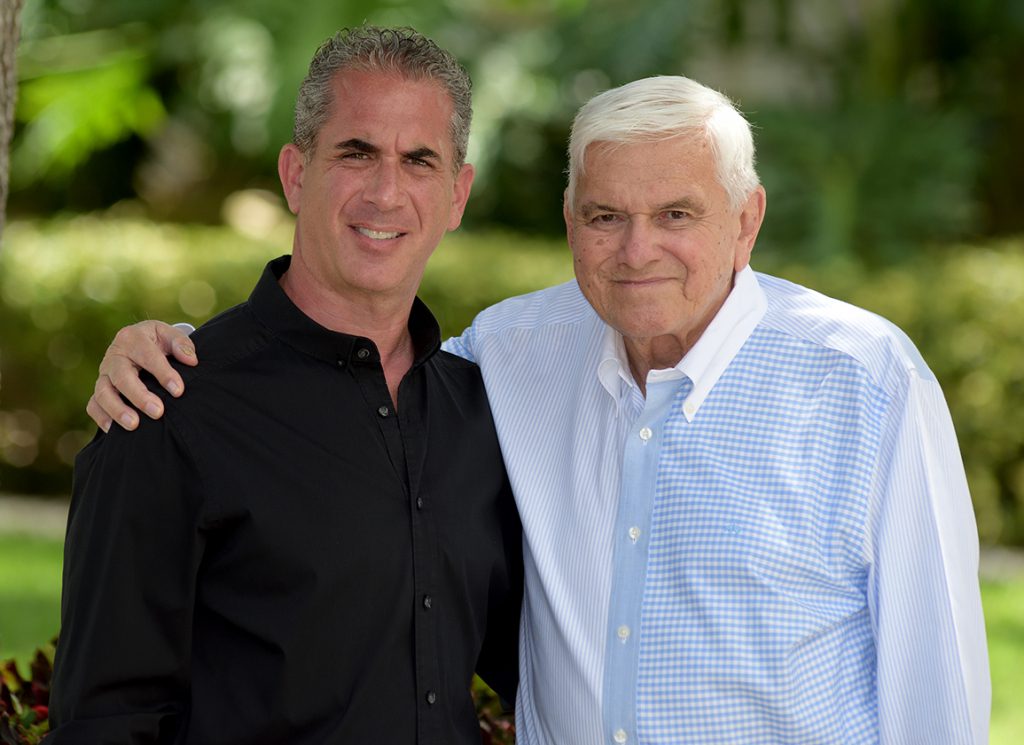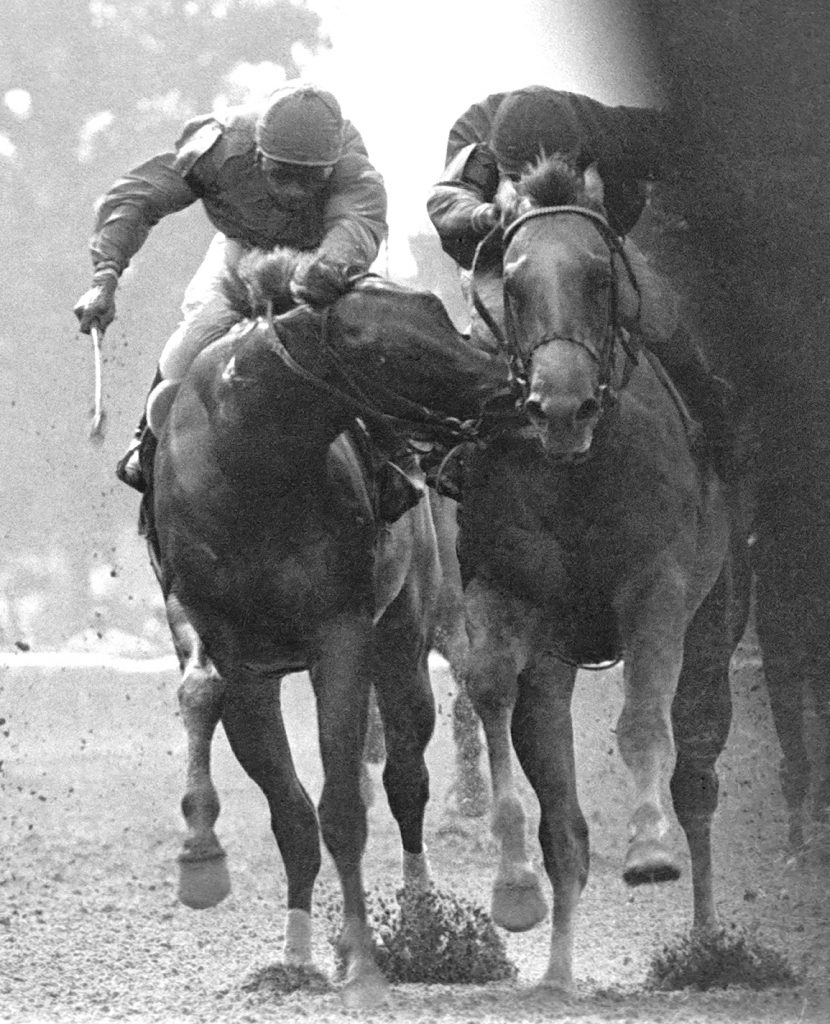by Jessica Owers and Oz Wedmore, TDNAusNZ
Case Clay was in the headlines last month with his announcement that, after 20 years with Three Chimneys Farm, he was going solo. This week he finds himself on the Gold Coast, and we caught up with him to learn a little more about the next chapter of his career.
Nearly 20 years ago, American bloodstock agent Case Clay did an interview with a local Kentucky newspaper. He said that succession, complicated as it was when it came to family business, didn't always go to plan.
Succession was something Clay knew all about as a young man and native of Midway, Kentucky, because his father, Robert Clay, founded Three Chimneys Farm in the early 1970s, which stood among its pastures the likes of Seattle Slew and Dynaformer.
In that 2004 interview, Clay said his father had never asked him to join him at Three Chimneys Farm, but the more the pair talked, the more the younger Clay learned about the racing and breeding industry.
By the time 2013 came along, and the Goncalo Torrealba family bought a controlling interest in Three Chimneys Farm, Case Clay was well on his way in a brilliant industry career of his own.
This week, the American finds himself ensconced on the Gold Coast, with its palm trees, stiff sunshine and Magic Millions Gold Coast Yearling Sale.
“There aren't many industries that would allow me to go swimming the surf in the morning, then go straight to work,” Case said, speaking to TDN AusNZ. “This is a global business and it's taking us to places we may not otherwise get to go.”
Arrowfield Years…
Clay's bloodstock duties are just one feather in his cap these days.
In America, he is the racing manager for Willis Horton Racing, he has an equine insurance business and buys horses for various clients and, in Australia, he is the American representative for Arrowfield Stud. He manages about 20 mares on this side of the world for clients, but his relationship with Arrowfield goes back a long way.
“I worked for Arrowfield about 20 years ago and John Messara has been a mentor for me,” Clay said. “So, about five years ago, I started working for Arrowfield again, this time as an American representative. We recruited some mares down here to Australia, and there are few of their offspring selling at this very sale this week.”
In those early years that Clay was at Arrowfield, Redoute's Choice (Aus) had his first crop to the track and Not A Single Doubt (Aus), his white-socked son, won the Strawberry Hill Slipper at Wyong, leading home Oratorio (Aus).
That was in 2003 and Clay was trackside at Wyong that afternoon with Messara. One start later, Not A Single Doubt won the Listed Canonbury S.
“John and his partners were very encouraged about what Redoute's might do, so it was very exciting to see how it's developed,” Clay said.
One of Clay's interesting sidenotes this week is his association with the American stallion Gun Runner, which, given Gun Runner has no yearlings on the Gold Coast this week, isn't as odd as it first sounds.
The Three Chimneys stallion was announced in 2022 as being offered to Southern Hemisphere time.
“Gun Runner has got off to a really great start in America, and the goal is to see what he can do in Australia and Japan,” Clay said. “He's already had some in the pipeline from his third and fourth crop, and there's some breeding this year in 2023, and they're trying to expand that in the Japanese and Australian markets.”
Clay has complete faith that Gun Runner, a six-time Grade I winner, will work in Australia. The horse is an ideal outcross, which will suit so much of the local broodmare band that is heavily Danehill-influenced.
Additionally, Gun Runner is from a Giant's Causeway mare, and that's a sire line that has worked in these waters in the past.
So how does Clay think breeders should access Gun Runner in Kentucky?
“I would think the most logical way in, to keep expenses down in not sending a mare up and then back, would be to purchase a mare either privately or in the November sales in Kentucky,” Clay said. “Then either breed on Southern Hemisphere time and ship down, or, if the mare is already pregnant, foal down and then breed to southern time before shipping down.”
It's a routine that Australasian breeders are getting used to, especially in the last few years with the popularity of Frankel (GB) and that horse's brilliant strike rate in Australia. At Banstead Manor, Frankel is likely to cover around 50 mares in the European off-season, meaning plenty of breeders have committed.
“I think you get what you pay for,” Clay said. “It's a quality exercise.”
Friends in High Places…
Just before Christmas, Clay announced his departure from Three Chimneys Farm. He'd done a lot of things in his life, like graduating with an economics degree from DePauw University, and even working in advertising for a time, but for 20 years professionally, he'd been with Three Chimneys in Kentucky.
It was a farm he knew all about, right from his parents' tenure through to the Torrealba era, and he was critical in recent years to its client relationships, both domestically and abroad.
Somewhere in the middle, he had started Case Clay Thoroughbred Management, a bloodstock agency of sorts. It negotiates private and auction purchases, manages portfolios and makes representations, among other services, all the while with Clay in his role at Three Chimneys Farm.
But the time came to go it alone and he kept the farm on as a vital client, which will only work in Gun Runner's favour.
Case isn't a stranger to sire power, growing up, as he did, on Three Chimneys. The property has been home to Seattle Slew and Dynaformer, as mentioned, but also to the likes of Rahy, among others.
“I feel lucky to have grown up at Three Chimneys who, by way of Seattle Slew, had a lot of top-end breeder clients,” Clay said. “Some of those clients have become generational, lifelong friends, from Kentucky to Europe, Australia and Japan. And we just happen to buy and sell horses to and from each other, which has been mutually beneficial. My other clients have found it valuable as well because they have private access to top stock.”
A good example of this symbiosis is the German-bred mare Dalika (Ger) (Pastorius {Ger}).
As a 2-year-old, she caught the eye of Bal Mar Equine's Paul Varga, who was keen to buy her from Germany. The filly's then owner, Gestut Ammerland, was a long-time client of Three Chimneys and, via good friend Crispin de Moubray, Clay helped to make the purchase happen. Dalika went on to be a Grade I winner.
Another example was the Distorted Humor mare Magical World, whose private sale from Daisy Phipps Pulito to Three Chimneys was brokered by Clay. The mare has since produced three stakes winners and she sold for a staggering $5.2 million at Fasig Tipton's 2021 Lexington November Sale.
Her multiple Grade I-winning 'TDN Rising Star' daughter, Guarana (Ghostzapper), sold at the same sale for $4.4 million.
Case also brokered the deal that sold Ivanavinalot, a daughter of West Acre to John Antonelli. The mare later became the dam of multiple champion Songbird (Medaglia d'Oro).
As such, this American is right at home in the palm-fringed, sun-soaked environment of Magic Millions. It's a long way removed from his other hobby–skiing–but if his popularity on-complex is anything to go by this week, the father of three is well-liked and well-known.
It's early in the piece for him as a solo agent, but he's most looking forward to the people in his job because people are what it's all about in this line of work.
“I'm really looking forward to continuing to build my bloodstock management/insurance business, and providing clients access to quality via relationships,” he said. “And hopefully get to the winner's circle in the process.”
The post Case Clay at Magic Millions appeared first on TDN | Thoroughbred Daily News | Horse Racing News, Results and Video | Thoroughbred Breeding and Auctions.



